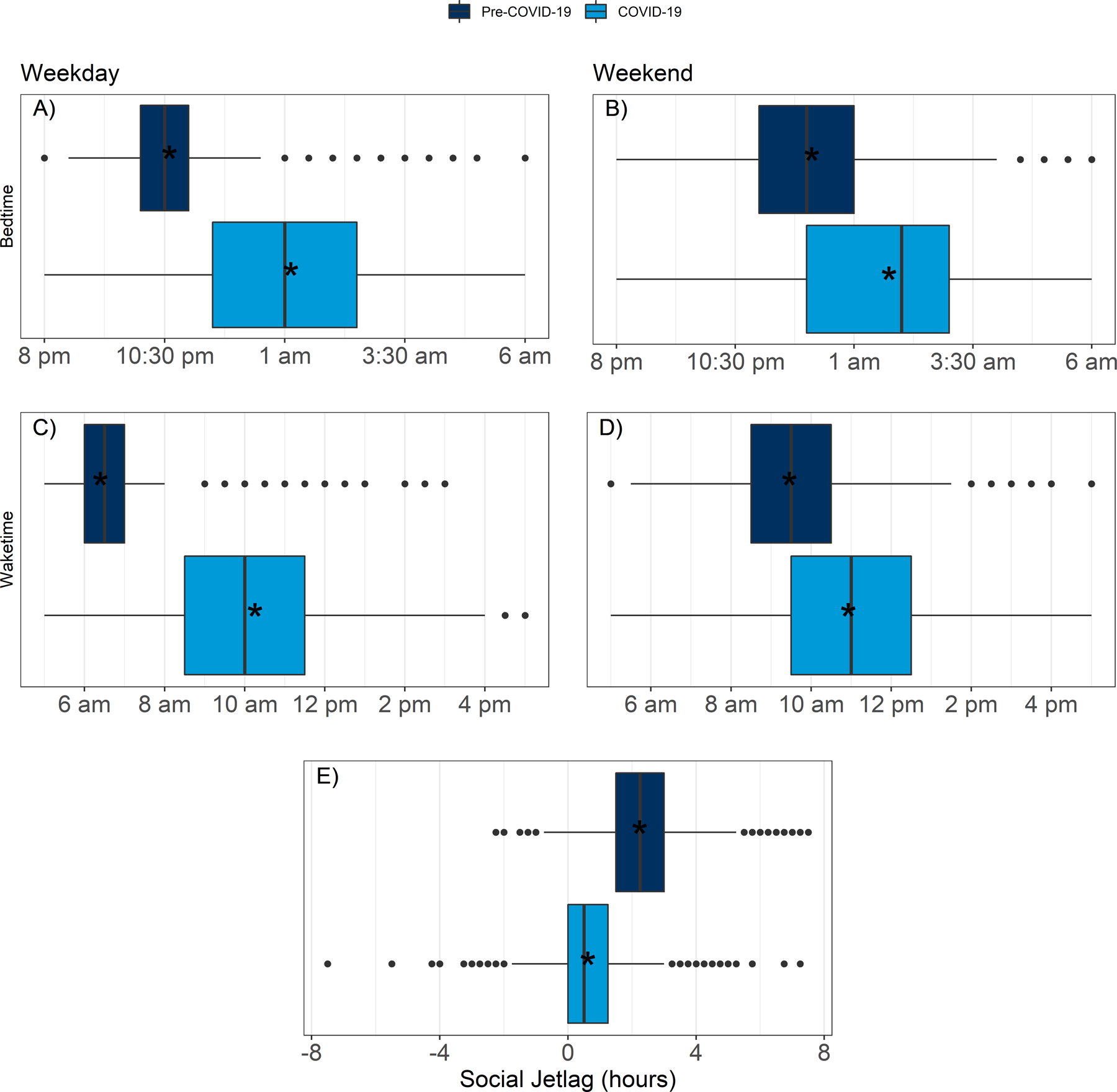Figure 1.

Bed and wake times during COVID-19 and before COVID-19 on weekdays and weekends. Box plots represent medians and first and third quartiles of bed and wake times with outliers expressed as dots. Mean times are expressed as stars. Bedtimes were delayed on weekdays by 2.51 ± 1.91 hours (A) and weekends and by 1.65 ± 1.79 hours (B) during COVID-19 (light grey) compared to pre-COVID-19 (dark grey; all p’s < 0.001). Waketimes were delayed on weekdays by 3.85 ± 2.40 hours (C) and weekends and by 1.47 ± 2.07 hours (D) during COVID-19 (light grey) compared to pre-COVID-19 (dark grey; all p’s < 0.001). Social jetlag during COVID-19 and before COVID-19. Social jetlag was calculated as the difference in sleep times on weekends and weekdays. Box plots represent medians and first and third quartiles of bed and wake times with outliers expressed as dots. Mean times are expressed as stars. Social jetlag was 2.2 ± 1.1 hours pre-COVID-19 (dark grey), and this decreased to 0.6 ± 0.9 hours on average during COVID-19 (light grey; p < 0.001).
